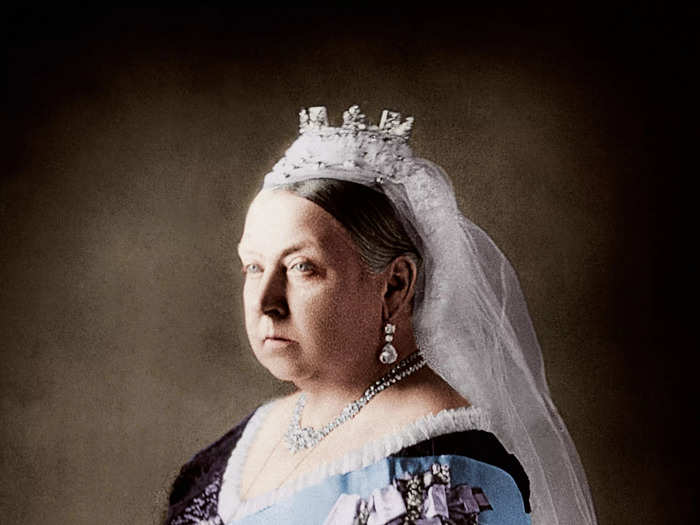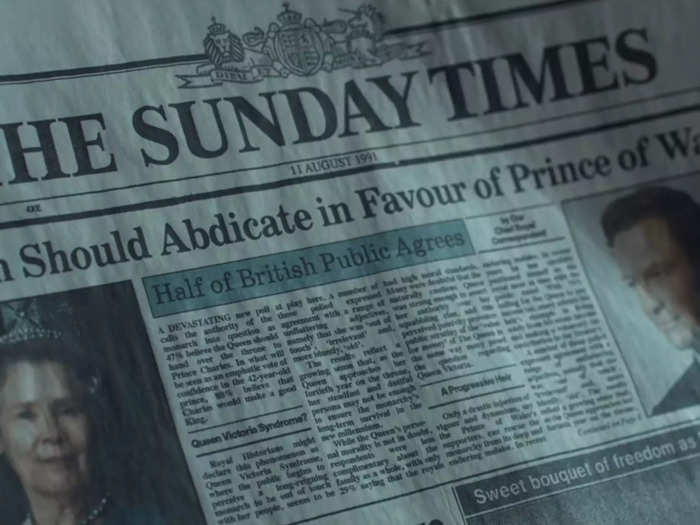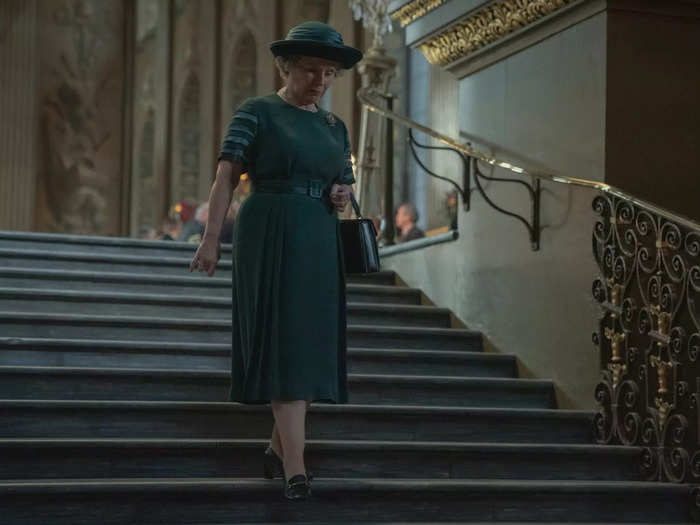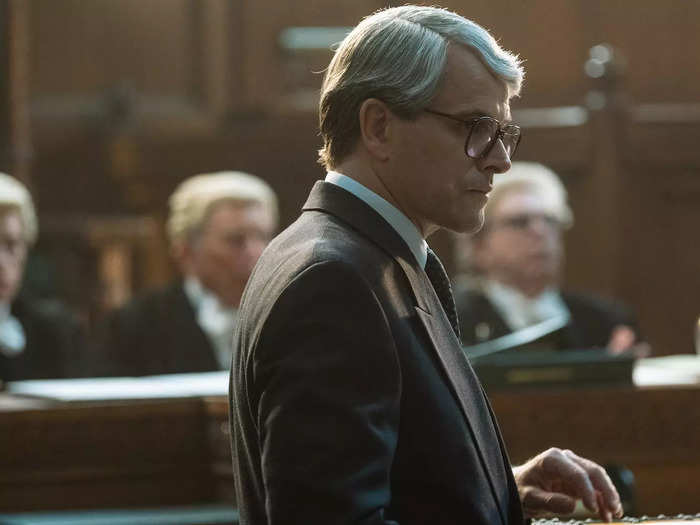Imelda Staunton as Queen Elizabeth II in Netflix's "The Crown."Netflix
- The first episode of "The Crown" season five shows the Queen falling out of favor with the public.
- She learns of a poll in a British newspaper that suggests the UK would prefer Charles to be king.
Season five of "The Crown," which follows the British royal family throughout the 1990s, premiered on Netflix on Wednesday.
The first episode, titled "Queen Victoria Syndrome," shows Queen Elizabeth II — who died in September at the age of 96 — coming to terms with the fact that she is starting to fall out of favor with the British public.
Her faltering popularity is neatly parallelled with her beloved yacht, Britannia, which after so many years of service, is in desperate need of repairs. While she argues for its necessity, her views are not shared by everyone — especially the public, who don't believe that their tax money should be spent on such extravagance.
"Queen Victoria Syndrome" does not appear to have been a widespread term before being used by the Netflix show.
Portrait of Queen Victoria who ruled for 63 years between 1837-1901. Bettmann/Getty Images
The phrase refers to Queen Victoria, who was on the throne for 63 years from 1837 to her death in 1901. Before Queen Elizabeth II beat her record, she was the longest-reigning monarch in British history and, just like the late monarch, ignored calls to abdicate in favor of a younger successor.
There is little to no evidence that the term existed in common parlance before the writers' room for "The Crown" chose to use it as a way to explain the British public's dissatisfaction with the aging monarch.
In fact, Google searches before the year 2022 for the term only bring up results related to a genetic disorder Queen Victoria had that cursed many of her descendants with poor health.
However, one rare reference to "Queen Victoria Syndrome" can be found in John Gardine's "The Victorians: An Age in Retrospect" (2006), in which the author claims that it was used by "certain members of the court circle" in the early 1990s.
Per, Gardine they spoke of the "threat" of Queen Elizabeth becoming an "a long-reigning monarch out of touch with her people," just like great-great-grandmother.
Real or not, in "The Crown," the fictional version of Her Majesty doesn't mind the comparisons nor sees them as a criticism. "It could only ever be taken as a compliment," she remarks.
The real abdication poll's results were very different from what was shown on screen.
"The Crown" season five, episode one. Netflix
The episode depicts the Queen's household staff desperately attempting to hide a copy of The Sunday Times from her as it contains a poll that suggests the then-Prince Charles (Dominic West) was more popular among the British public than her.
The front page of the newspaper, dated August 11, 1991, reads: "Queen Should Abdicate in Favour of Prince of Wales," followed by a subheading: "Half of British Public Agrees."
An advisor working for Prince Charles is also shown explaining that those surveyed described the reigning monarch as "irrelevant," "old," "expensive," and "out of touch." In contrast, they thought of Charles as "young," "energetic," "modern," and "empathetic."
However, in reality, the findings of the poll, which was conducted by MORI (Market and Opinion Research International) rather than the newspaper itself, were actually largely pro-monarchy.
The report — which was dug out of the archives and republished earlier this year — begins: "Despite assaults by the tabloid press and a decade of intimate scrutiny, the royal family enters the 1990s as a remarkably popular part of British life."
It found that the Queen Mother was Britain's favorite royal at the time, followed by the Queen and then the Prince of Wales. Nine out of 10 of those surveyed viewed all three as "mainly favorably" or "very favorably."
The article does include the statistic mentioned in "The Crown," but the show has left out some crucial details.
Imelda Staunton as Queen Elizabeth II in season five of "The Crown." Netflix
Only 47% (so nearly half, rather than half) of the British population supported the Queen stepping aside for Charles, and this is followed by the words "at some stage," meaning it really wasn't the urgent call for change it was made out to be in the episode.
Additionally, the poll results were published on the earlier date of January 21, 1990, when Margaret Thatcher (played by Gillian Anderson in season four) was leading the country as prime minister.
As the publication itself has pointed out, the only mention of the Queen in The Sunday Times on August 11, 1991, was to "the undisputed Queen" in an advertisement for a royal cruise liner.
As a result, new light is thrown on John Major's criticism of the show.
Jonny Lee Miller as British Prime Minister John Major in season five of "The Crown." Netflix
In the episode, Charles is shown to cut his and Diana's "second honeymoon" short in order to fly back to the UK and meet with the PM (Jonny Lee Miller) to lobby for his mother's early abdication.
Upon reports of the scene's inclusion earlier this year, a spokesperson for the former leader issued a statement that described the drama as a "barrel-load of nonsense peddled for no other reason than to provide maximum – and entirely false – dramatic impact."
There are no records that suggest such a meeting ever took place and Netflix itself has admitted that the series is a "fictional dramatization, imagining what could have happened behind closed doors."
It doesn't result in anything aside from putting Major in an awkward position. While Charles warns that it is dangerous to ignore polls, Major responds: "It's equally dangerous to be guided by them."
Queen Elizabeth II remained as head of state until her death in 2022, which brought her record-breaking 70-year reign to an end. Upon her death, King Charles III ascended to the throne at the age of 73.




